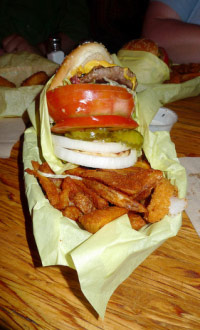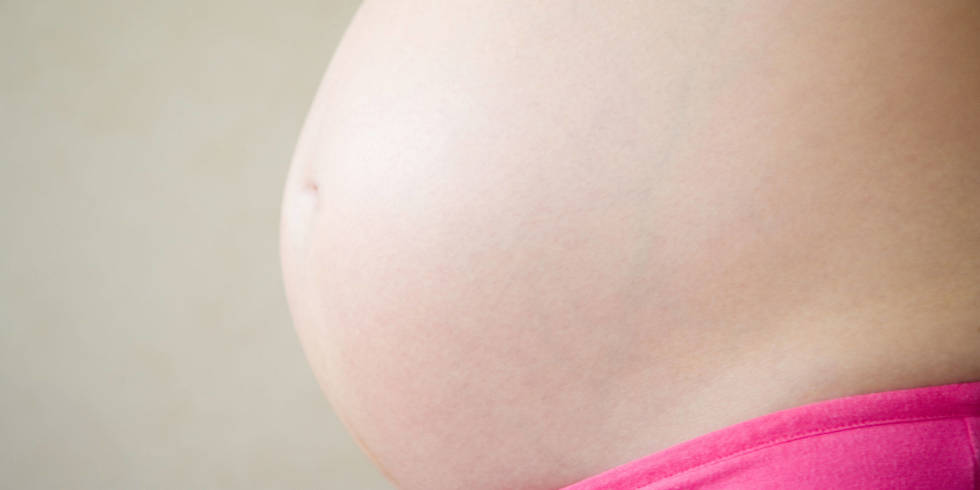Controlling Portions Can Control Your Weight
A number of years ago, I found myself living in New Mexico but "commuting" to work in the Midwest, to consult for clients there. One of the first things I noticed was the size of the people; an enormous number of people around me were overweight. One of the second things I noticed, having to eat out at restaurants a lot, was the reason why ?the portions being served to me as "normal" were two to three times the size of the portions I considered normal back home. I very quickly learned to stop ordering a main course altogether, and to stick to "appetizers," which often were the size of what I'd consider a full meal at home.
 In the years since, this tendency to "supersize" portions has expanded to the rest of the nation. A fast-food hamburger in the 1950s weighed 2.8 ounces and contained 202 calories; today the average burger weighs 4.3 ounces and contains 310 calories. A "regular" size Coke has doubled in size during that same period, to the point that one now contains over a third of your total recommended calorie allotment for the day.
In the years since, this tendency to "supersize" portions has expanded to the rest of the nation. A fast-food hamburger in the 1950s weighed 2.8 ounces and contained 202 calories; today the average burger weighs 4.3 ounces and contains 310 calories. A "regular" size Coke has doubled in size during that same period, to the point that one now contains over a third of your total recommended calorie allotment for the day.
Larger portions mean larger people ?it's as simple as that
There is a substantial body of research that tells us that the more we're served ?at home or when eating out ?the more we'll eat. As nutritionist Carolyn Dunn says, "It doesn't matter how hungry you are or what you ate earlier, you generally eat more than you need to if it's put in front of you." Psychologists speak of this phenomenon in terms of "unit bias" ?no matter what our hunger needs are, we have a psychological need to consume all of whatever units of food are served to us.
Two of the most powerful tools we can use to control our weight are to learn what constitutes a "normal" sized portion and how many calories it contains, and then to control the size of the portions of food we eat. The 6-ounce steak served to you at a restaurant may be labeled on the menu as "small," but it exceeds the total recommended amount of meat for the whole day in a 2000-calorie diet.
The answer to losing weight, or maintaining your weight, is simple: eat fewer calories. One way to do that is to eat smaller portions, at all meals.
How to retake control of the portions of food you eat
The following suggestions have been compiled from nutritionists and food experts, to help you when trying to regain control of how much you eat each day:
?When you cook at home, actually weigh the portions of meats, grains, and vegetables you serve, and compare them to the recommended serving sizes. You'll probably be surprised that what you think is "normal" is much larger than the USDA's idea of normal.
?Once you've determined what a proper portion size is, try to use the same sized plates at every meal, so that you can get used to seeing what that portion looks like on the plate.
?Always put your food on a plate, rather than eat it out of the container or serving dish it may have come in. This will again reinforce the visual cues of judging the proper size of portions by how they appear on your plate.
?When you're cooking at home, stop nibbling while you cook. Every calorie counts.
?When you've finished cooking and serving yourself and your family, rather than leave the leftover food on the table, take it back to the kitchen to "keep warm." Both you and your family will be less likely to have seconds if you have to get up to get them.
?When eating out in restaurants, order from the child's menu, or ask for lunch-sized portions at dinner. If the restaurant doesn't like it, don't order main dishes there any more; order side items from the a la carte menu.
?If you know that the restaurant "supersizes" its portions in ways you don't want, eat only half of the meal. Take the rest of it home with you in a doggy bag, or split one of the way-too-big main dishes with a friend.
?Watch what you drink. Wine, beer and soft drinks can easily double the total calorie count of a meal. Drink water, or sugar-free teas.
?Find ways to trick your taste buds into thinking the meal is over. Psychologically, many of us don't feel that the meal has ended until we have dessert, or taste something sweet. Naturally, this adds calories. So if you can, try retraining your taste buds by developing a new "food cue" to signal the end of the meal, such as having a cup of coffee, or chewing a piece of gum.
-
All you wanted to find out about Fat Loss Foods
Have you ever looked at your own reflection on the mirror? It seems th
-
Effective Tips To Losing Those Extra Pounds
You probably would like to know how to start losing weight and w
-
The Psychology Of Weight Loss
You see the razor-thin models gracing the covers of magazines̷
-
The Glued Meat Conspiracy
When was the last time you had glued meat for a meal? Before y
-
How to Lose Weight in Your Face in a Week
Just like your body, you can lose weight off your face too. You can ch
-
Your Child Has Diabetes
Diabetes in your child affects the entire family. It can change yo
- DON'T MISS
- Tips to Lose Weight in a Week
- Lose Weight Playing Golf
- Overcome the Weight Loss Plateau
- Break The Chain Of Yo-Yo Dieting
- Ladies, These 3 Secrets Will Help You Lose Weight Quickly
- Become a Lean Machine or How to End the Dreaded Weight Loss Plateau
- Weight Loss Goals - Start To Lose Weight In 2 Weeks
- Is A Vegetarian Diet A Healthy Way To Lose Weight
- Lose Weight Easy and Fast - Tips For Losing Weight -No-No Beverages
- How to Lose Belly Fat - 3 Top Tips Revealed




